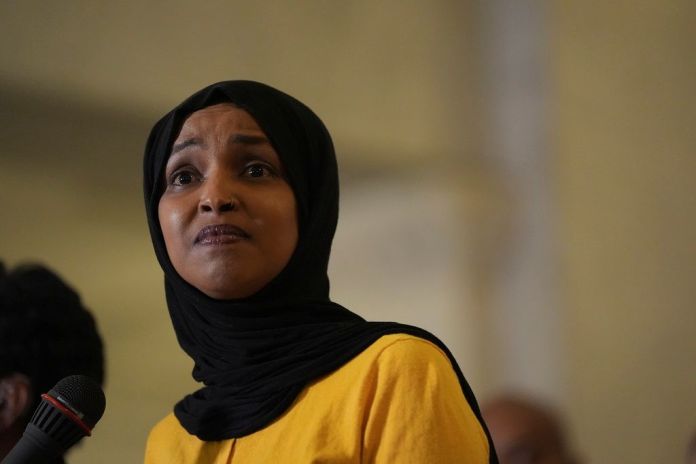Mexico Will Likely Unleash A Wave Of Migrants Post-Election
In Tapachula, Mexico, a recent surge in migrant caravans has caught attention amid the backdrop of the upcoming U.S. presidential elections, where immigration is a pivotal issue. The situation escalated with the involvement of the Mexican government, which seems to be facilitating these caravans to manage the growing numbers of migrants seeking to reach the U.S. border. A secretive deal between President Biden and the Mexican government led to the deployment of thousands of Mexican troops to the U.S. border to detain and internally deport migrants to cities like Tapachula, effectively creating “caged cities.”
As these internal deportations occurred, Tapachula became overwhelmed with an influx of migrants, leading to dire living conditions. With reports suggesting the local population of immigrants swelled to approximately 150,000, conditions deteriorated as many struggled to obtain necessary documentation while facing a lack of resources and public services. The article highlights the paradox of U.S. media narratives suggesting that caravans are set on reaching the American border when, in reality, many participants express urgency about crossing before the potential return of hardline immigration policies under Trump.
Moreover, amidst the chaos, the Mexican government has initiated a transfer program allowing migrants to move to other southern cities, aiming to alleviate pressure in Tapachula. However, many migrants remain anxious about their chances of success and the looming threat of stricter border policies, driving them into caravans as a means of expedited passage northward. This complex situation underscores the evolving dynamics of immigration in the region, influenced by political agendas and humanitarian crises.
TAPACHULA, Mexico – A tip led me to 40 kilometers north of this down-at-heel border city, by rental car, until I spotted the unmistakable sight: a 1,000-strong caravan of migrants marching by foot along Mexico Highway 200 for hundreds of yards.
Men, women, children, and babies bobbed and weaved together in an elongated, colorful human pack. I spent the day walking among and interviewing them, the only reporter there.
Just the week before, a 2,000-strong migrant caravan from Tapachula did catch some fleeting American media attention, and next came a massive third one marching out of Tapachula which became a full-scale U.S. news story as the American presidential election campaigns draw to their climactic Nov. 5 end, with illegal immigration a top issue in the election’s outcome.
Image CreditTodd Bensman
American news media are warning that migrant caravans are about to start crashing over the U.S. border, but in my interviews, I discovered that story was totally, wildly wrong.
For starters, none of these caravans ever intend to reach the American border because that is not their main purpose — at least not until after the U.S. election. They are not autonomous upstart rebel movements like caravans of old. Rather, the Mexican government seems to have facilitated them and has provided military and police escorts so that their participants can safely reach their true destinations, which again, is not the American border.
The underlying story that spawned these caravans begins in December 2023, conveniently right at Christmastime, when most reporters and editors would be sipping eggnog around their homefires.
That was when President Joe Biden called his Mexican counterpart and struck a deal, then sent his most senior lieutenants to Mexico to work out the details of what remains a highly mysterious grand diplomatic bargain.
Caged Cities
The deal was to have Mexico deploy 32,500 troops to the U.S. border to round up untold thousands of intending border crossers from the northern precincts and force-ship them – “internal deportation” by planes and buses – thousands of miles to Mexico’s southern provinces and entrap them in cities like Tapachula in Chiapas State and Villahermosa in Tabasco State, behind militarized roadblocks.
Mexico closed off most of its freight trains to migrant-free riders, bulldozed northern camps, and patrolled relentlessly for more deportee targets, as I was perhaps the first and only in the nation to report on Jan. 17.
The most likely purpose of these interactions besides the officially provided explanation about “ongoing efforts to manage migratory flows” and “additional enforcement actions urgently needed?” Best guess: to spare the Democratic presidential candidate the damaging political spectacle of mass border crossings for the duration of the coming political campaign season that was sure to feature illegal immigration as a key issue.
Indeed, illegal border crossings immediately plummeted from an embarrassing record-breaking 12,000-14,000 per day in November and December 2023 to about 3,000 or 4,000 per day before January was even over.
U.S. media have been sipping eggnog ever since, while hundreds of thousands of immigrants stacked up in the caged cities of Mexico’s deep south month after month after month, although “60 Minutes” finally broke from the boozy pack to run a story about it in late March.
Even the U.S. Department of Homeland Security’s just-released 2025 Homeland Threat Assessment admits the huge declines in illegal border crossings since December 2023 is largely to “increased Mexican enforcement efforts.”
So what does any of this have to do with migrant caravans that are now suddenly appearing 10 months later?
Hellscape Tapachula and Population Transfers
My interviews with those in the caravans and those planning to join new ones during a weeklong visit to Tapachula, as well as with government officials, police, and Mexican troops lay it out.
Tapachula was bursting at the seams with an entrapped, growing population being deported into it from the north and with an estimated 500-1,500 new foreigners entering every day from Guatemala on the south.
The misery index skyrocketed for both the immigrants and the city’s residents and managers as money-less people unable to advance north for months returned home, or begged, hustled for coins and food, slept in public spaces, and waited for Mexican asylum permits or American parole on the CBP-One mobile phone apps that never seemed to materialize quickly enough.
Tapachula became a hellscape.
No one really knows how many people stacked up, but local shelter managers in Tapachula told me they had filled up long ago. The publisher of Noticia De Tapachula, the daily newspaper, told me 150,000 immigrants were in town at any given time, a 40 percent increase in the city’s normal population of 350,000. Only a few months into the Mexican operations, 20,000 immigrants had been internally deported to Villahermosa, a number that must be many times that by now for the city of 340,000.
I’ve visited Tapachula five times over the last decade and have never seen it so packed. Southern Mexico must almost certainly be bulging to dangerous proportions with many hundreds of thousands of foreign nationals aching to break free toward the American border.
But the American presidential campaigns were still ongoing, and Mexico’s central government had to hold the line somehow while relieving the pressure cookers of its caged cities. It was untenable.
Mexico’s chosen relief strategy was to issue short-distance city transfer travel permits that would allow thousands to leave the jobless, denuded, crime-riddled hellscape of Tapachula for less beaten southern cities, still in Chiapas or in neighboring states.
Image CreditTodd Bensman
I spent time at two different roadside areas where federal immigration officers would call out names from the crowd, who would board buses that delivered them to other regional cities in Chiapas – but NOT beyond them and rarely beyond Mexico City, although camps even there are overflowing.
For most, venturing north of Mexico City still risks a one-way ticket back to these hellscapes, a truly deterring prospect.
Fear of Trump Brings on the Caravans
Mexico is struggling to maintain its end of the bargain for a particular reason right now. Countless immigrants in the caravan I followed and back in Tapachula explained that they were feeling desperate to cross before Donald Trump wins the election and closes the border to all immigrants, as the Republican candidate has repeatedly promised. They’re pouring in from Guatemala and pushing hard against the Mexican cordon, hoping for a breakdown.
The Mexican government’s bus transfer program does not seem to be keeping up with fear and tension driving immigrants to cross in at what Mexico’s foreign minister recently said has now reached 7,000 per day.
And so, the Mexican government saw caravans as a way to move people far faster than the inter-city bus transfer program I observed in action. This explains why the Mexican military and police are escorting the caravans, rather than blocking them.
Their destinations are other regional towns and cities — not the US border. The soldiers and police will not let the caravans go beyond middle Mexico.
Every caravan traveler I spoke to understood that it would deliver most to Tuxtla, Chiapas, and some thought they may try on their own to make it to Mexico City. But no one was willing to chance deportation back to hellscape Tapachula to venture beyond.
Mexico is still trying to hold up its end of the bargain, at least until Nov. 5, even though some are starting to slip through in greater numbers and reaching the Texas city of Eagle Pass, for instance.
At least not until the American election.
After that, all bets are off on caravans to the border no matter who wins.
If Trump or Harris wins, Mexico might well consider that it more than satisfied its obligation to the current White House occupant and open the floodgates wide. If it’s Trump, perhaps Americans could expect a massive tidal wave of caravans for the 10 weeks before Inauguration Day.
If it’s Harris, perhaps the massive tidal wave can go on for the next four years, much like the last four.
Todd Bensman is a Texas-based senior national security fellow for the Center for Immigration Studies, a Washington D.C.-based research institute, and a writing fellow for the Middle East Forum. His latest book is “Overrun: How Joe Biden Unleashed the Greatest Border Crisis in U.S. History” (Bombardier Books). For nearly a decade, Bensman led counterterrorism-related intelligence efforts for the Texas Department of Public Safety’s Intelligence and Counterterrorism Division. Follow him on Twitter @BensmanTodd.
" Conservative News Daily does not always share or support the views and opinions expressed here; they are just those of the writer."




